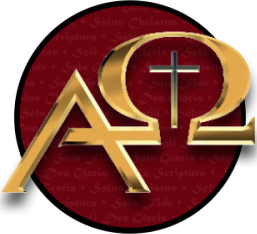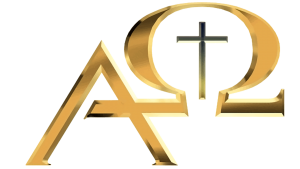Constantin von Tischendorf was an industrious and prolific textual scholar. He expended much energy hunting out manuscripts, publishing more than any other scholar had before him, along with a number of editions of the Greek New Testament. His total number of publications exceeds 150, most of which relate to Biblical criticism. Tischendorf’s life’s ambition was to seek out the earliest Biblical manuscripts available, and with them reconstruct the original text of the New Testament–something he regarded as a sacred task. Between the first and second editions of his New Testament text, while visiting the monastery of St. Catherine at Mount Sinai, he noticed some parchment leaves in a wastebasket. When he examined them he recognized the text as coming from the Greek Septuagint written in an early uncial script. According to Tischendorf, these parchment leaves were to be used for lighting the monastery oven, though, as Dr. Daniel Wallace has suggested, this might just be Tischendorf’s embellishment to make himself sound more of a rescuer than a thief. Tischendorf warned the monks that the parchment was too valuable to use for kindling, a warning he was to regret issuing when he returned a few years later to find the monks cautious and unwilling to disclose anything further about their manuscripts. When Tischendorf made a third visit to the monastery in 1859, he presented the steward with a copy of the Septuagint he had recently published. The steward remarked that they had something similar and brought him a manuscript covered in a red cloth. When Tischendorf examined the manuscript, he discovered it to be that manuscript he had been longing to see all this time. It contained most of the Old Testament, the entirety of the New Testament, and a couple of other early Christian writings previously known only either in a different language or by title. He spent the entire night examining it, and eventually, after much negotiation and diplomacy, managed to procure the codex for the Czar of Russia. After the Russian revolutions, the codex was sold to the British government and it resides to this day in the British Library. This codex, named Sinaiticus after the place where Tischendorf found it, was dated to the fourth century making it the earliest complete New Testament extant today.
Early manuscript finds like this led to the publication of Greek New Testaments by people such as Lachmann and Tregelles that were not dependent at all upon the Textus Receptus, but drew their evidence directly from these earlier manuscripts. In 1881, an edition of the Greek New Testament appeared that was, by far, the most significant edition of the Greek New Testament to date: The New Testament in the Original Greek, by Brooke Foss Westcott and Fenton John Anthony Hort. Unlike their predecessors in the field, Westcott and Hort did not collate manuscripts for this text. They used existing manuscripts, but refined their predecessors’ critical methodology. The most significant contribution, and the one that was to have the most lasting effect was that Westcott and Hort gave scholarly, critical reasons for considering the so-called “Syrian” text (the text behind the Textus Receptus) a late and untrustworthy text. This position (and many of their arguments) has carried forward to this day, such that this is now the position of the majority of textual scholars. They also refined the identification of text types.
Text Types
Griesbach had, at the end of the eighteenth century, divided the various New Testament manuscripts into five or six groups based on his study of the transmission of the New Testament text. He eventually reduced these groups to three, and named them according to what he believed to be their region of origin: Alexandrian, Western, and Byzantine. Inasmuch as the manuscript in question contained readings similar to others in one of these groups, it was assigned to that group. Westcott and Hort broadly agreed with Griesbach’s identifications except that they re-named the Byzantine group the “Syrian” text. They believed that the textual evidence demonstrated the Syrian text to be the latest of the text types, containing what they called a mixed text. That is, the text often contained readings of other types conflated together to produce a smooth text. They considered this to be evidence of the work of a later editorial hand (or hands) on the text, sometime around the fourth century. In light of this, they were convinced that there were no Byzantine manuscripts prior to the fourth century, and the textual evidence at that time supported this claim. They dismissed the Syrian text as more fitted for cursory perusal or recitation than for repeated and diligent study.
Along with the Syrian text, Westcott and Hort recognized the Western text, which, while an ancient and popular form of text, was characterized by paraphrase and a dangerous fondness for assimilating similar passages to destroy any meaningful differences between them. They also identified the Alexandrian text, which they considered to be one that is polished in style and more precise in syntax–hallmarks of revision to the text. Despite this, the Alexandrian text was thought to be early and an important witness to the original manuscripts.
The best text type, according to Westcott and Hort, was by far what they called the Neutral text. This text was the most free from later stylization, harmonization, or any other kind of editorial corruption. Hence, this text type is, by their estimation, the closest to the original text of the New Testament. For Westcott and Hort, Codex Sinaiticus (Aleph) and Codex Vaticanus (B) are the best representatives of this text type; every reading of these codices was to be given weight and none rejected lightly. When Aleph and B agree on a reading, especially when they agree against the other text types, unless there is very strong internal evidence to suggest otherwise, Westcott and Hort said that reading must be accepted as original.
While Westcott and Hort contributed greatly to turning the tide of opinion against the Textus Receptus, the Textus Receptus was not without its defenders. Among those defenders, the most notable of this time was probably John William Burgon, Dean of Chichester. Metzger characterizes Burgon as a leading champion of lost causes and impossible beliefs, but it is wrong to dismiss Burgon lightly. He was certainly a scholar of the New Testament text and, unlike many who would take his position today, had a lot of first-hand experience examining the manuscripts in question. Burgon was not so much an advocate of the Textus Receptus as he was a critic of Westcott and Hort and a defender of the much-maligned Syrian text type. Contrary to Westcott and Hort, he considered this text type to be the “traditional” text and was not prepared to let Westcott and Hort cast aspersions on the text which, as he believed, was the text used by the church from the beginning, without a fight.
Burgon is often criticized for the belligerent nature of his argumentation, however one must bear in mind that he believed he was fighting, against growing popular opinion in favor of his opponents, for the preservation of the Word of God. The character of a man’s scholarship and the weight of his arguments should not be lightly dismissed because of the emotive way in which he may feel obliged on occasion to express them. Besides, Burgon’s work is not as full of this kind of pugnaciousness as some portray, and it is not nearly as vitriolic as some of his modern-day followers. There is a scholarship to his work that demands respect and attention, even by those who disagree with him most strongly. Along with Burgon opposing Westcott and Hort were F. H. A. Scrivener, who also rejected their dismissal of the Syrian text, and George Salmon, who believed that more consideration should be given to the Western text type.
Westcott and Hort’s “Neutral” text was absorbed into the Alexandrian text by later scholars, and their Syrian text became more commonly referred to as the Byzantine text. Aside from this, their approach was largely adopted by the scholarly community, and the vast majority of Greek New Testaments published since their time have been based on their work. Their attitude towards Aleph and B has been modified by later scholars to account for the numerous significant finds of early New Testament manuscripts. Aleph and B still have pride of place, but their readings are not always so readily accepted in the face of earlier and better readings now available. As will be noted later, the hallmark of the position taken by most modern textual scholars is not one that holds to a couple of manuscripts regardless of the evidence, but rather one that is constantly informed by the facts of the evidence, and does not allow tradition and theological speculation to cloud the task at hand: the recovery of the original text of the New Testament.
Part 7: The Task of Textual Criticism: Weighing the Evidence–coming soon…



